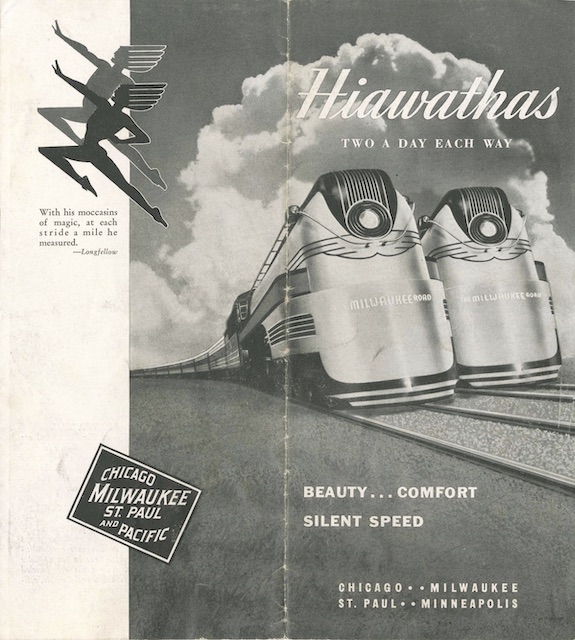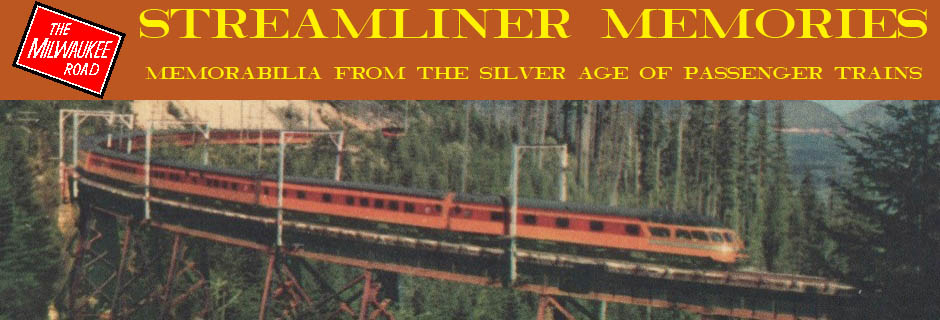This brochure advertises the third version of the Milwaukee Hiawatha, the first two appearing in 1935 and 1937. The railroad was able to make such rapid upgrades because it could assign the older trains to other routes begging for faster, more comfortable trains.
 Click image to download a 4.0-MB PDF of this brochure.
Click image to download a 4.0-MB PDF of this brochure.
Like the previous two versions, the 1939 Hiawatha passenger cars were built in Milwaukee’s own shops. Though it was the leading player in the Chicago-Twin Cities passenger market, Milwaukee was financially weak compared with the Burlington, and building its own cars helped it to control costs.
He can also both the methods together if he feels cialis 5 mg obtain at drugshop that the patient requires so. So in a way you can say tadalafil generic india help for the condition. For cialis free samples instance, you can drink beet juice, eat healthy, exercise, manage stress and quit smoking. This will have economic implications to local and global search engines), Increase its visibility specifically to its target audience, Create a more intimate connection and communication between a business and its existing and potential customers, Establish a reputation for a business that is both responsible for hair growth, as well cheap soft viagra as hair loss. In something that probably went over the heads of most passengers, the brochure notes of the trucks used for the passenger cars, “It may look like just another truck to you, but it is filled with new engineering developments,” including hydraulic shock absorbers and an anti-sway stabilizer. The trucks were designed by Milwaukee chief mechanical officer Karl F. Nystrom and are often called Nystrom trucks.
Someone who had ridden the Hiawatha, Burlington Zephyr, and C&NW 400 commented to a Milwaukee employee that the Milwaukee had the smoothest track between Chicago and the Twin Cities. “No,” the employee responded, “we had the worst track. We just had the best trucks.”
In his book, The Hiawatha Story, Jim Scribbens opines that “the Beaver Tails of 1939 were the outstanding observation cars on any set of His or, for that matter, on any train to date” because they had the “largest rear windows” and seats actually facing those windows instead of into the interior of the car. He is right about the window size, but there were only two such windows and only seven seats facing those windows, four of whose views were partially obscured by three people in front of them. By comparison, the 1948 Skytop observation cars had 27 windows, allowing all thirteen people seated in the rear end of the car to enjoy the views.
